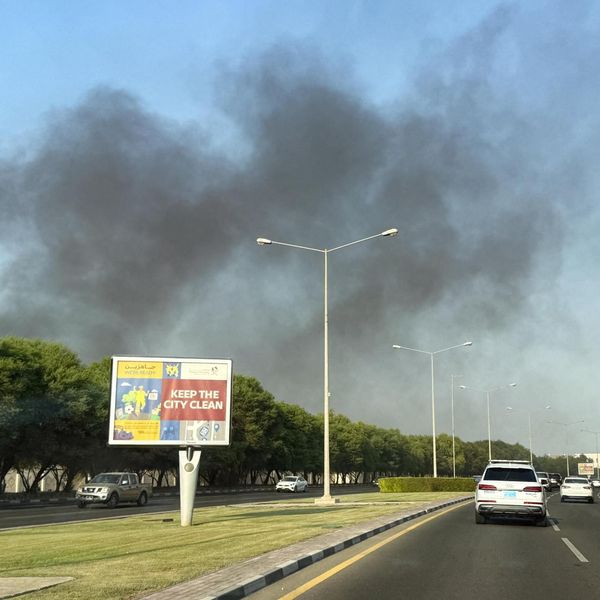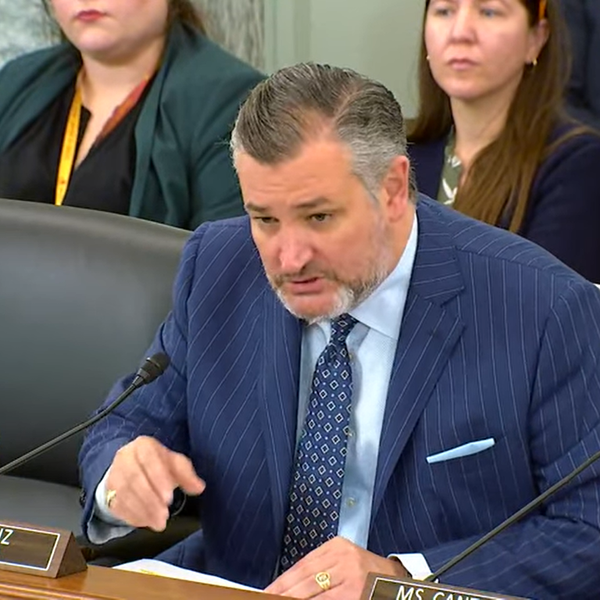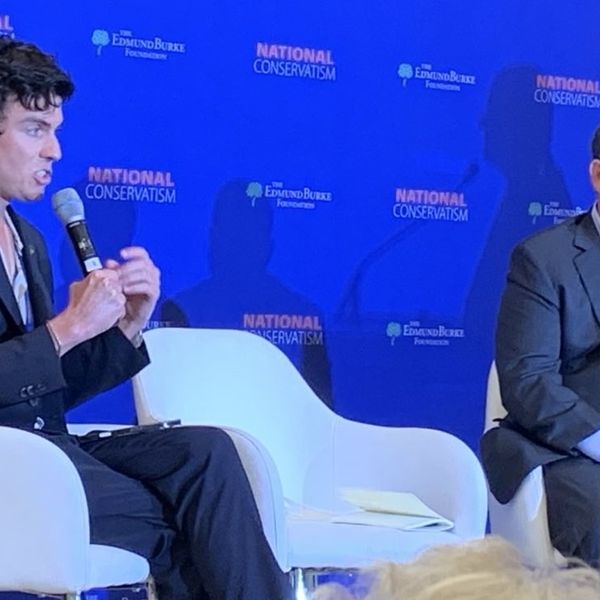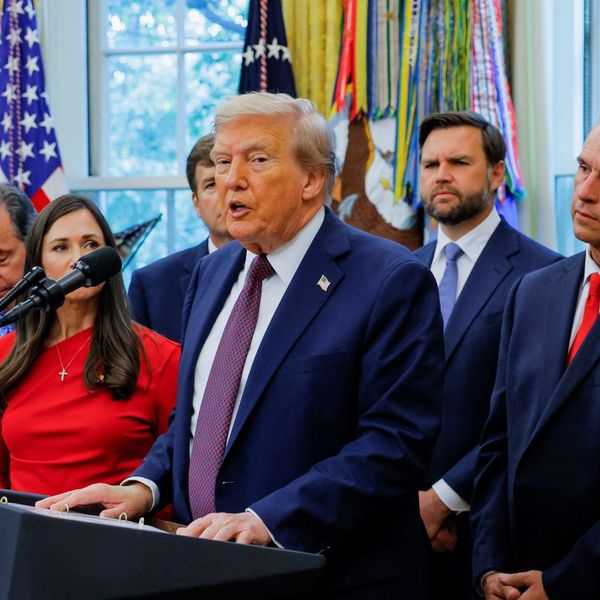“Throughout history the secret to success has been love, freedom, and justice. … Building a better tomorrow filled with freedom, justice, and love is the goal of every nation. We should all strive to achieve this goal. … The search for freedom, justice, peace, and security is only possible if there is freedom of choice. … Liberty cannot be limited, confined, or negotiated. It is a common human principle.”
These words are not parts of the UN Charter or the Universal Declaration of Human Rights. They are excerpts from tweets posted by Iran’s former firebrand President Mahmoud Ahmadinejad over the course of past months. Ahmadinejad’s comments inarguably earned him renewed public attention at a time when the thus-far retired politician is not making headlines anymore like the tumultuous years of his presidency, when literally every single speech he delivered would generate an international controversy.
Mahmoud Ahmadinejad was a newcomer to the battle of power long fought in Iran by the political heavyweights when he entered the presidential race in 2005. In the presence of such veteran politicians as the two-time former president Akbar Hashemi Rafsanjani, Parliament Speaker Ali Larijani, former Parliament Speaker Mehdi Karroubi and former police chief Mohammad Bagher Ghalibaf, Ahmadinejad won a surprise run-off against Ayatollah Hashemi Rafsanjani to become the first president who wasn’t officially part of the inner circle of the Islamic Republic’s confidantes since the 1979 revolution.
A former provincial governor whose highest-ranking assignment was the Mayor of Tehran, Ahmadinejad ran on a campaign platform evolving around the ideas of social justice, battling corruption and distributing the oil income among the Iranian citizens evenly.
Soon after coming to power, however, it turned out that Ahmadinejad envisioned his presidency as an opportunity to enrich himself and his close friends and allies politically, financially and socially. The first indication of his corruption was the appointment of unknown figures to different ministerial posts, who were actually his close university friends, professors and former colleagues at the Tehran Municipality or the province of Ardabil, where he had served as the governor from 1993 to 1997. It didn’t take long before his campaign promises faded away.
Legacy of failure
Ahmadinejad’s aggressive foreign policy, his divisive rhetoric, diplomatic ineptitude, disdain for international norms and speeding up of Iran’s nuclear program in violation of several UN Security Council resolutions made him an internationally controversial figure under whom Iran’s relations with the outside world suffered gravely. The improvements made of Iran’s global image under Ahmadinejad’s predecessor, the reformist President Mohammad Khatami, were practically undone. It was during Ahmadinejad’s time in office when the most stringent and grueling economic sanctions were imposed on Iran by the UN Security Council, the United States and the European Union. At that time, the national economy was sent into a tailspin. Even before the sanctions were introduced, his economic mismanagement was glaring and his critics accused him of cronyism and of funneling the country’s wealth to his allies and partners.
As reported by the Central Bank of Iran, the petroleum-rich nation exported a total of $639 billion worth of oil during the 2005-2012 period, which are in effect the years of Ahmadinejad’s presidency. Between 1965 and 2004, representing the 40-year period preceding Ahmadinejad’s tenure, Iran exported a total of $582 billion worth of oil. The value of Iran’s oil exports in President Ahmadinejad’s eight years in office surpassed that of the foregoing four decades. And yet nobody understood how this huge sum of money was spent without the economy, exports, employment and tourism experiencing a boost. In Ahmadinejad’s last two years as president, Iran’s GDP contracted by 6.6 percent and 1.9 percent respectively. The inflation rate in 2013 stood at 39 percent. Vehicle production fell by around 40 percent between 2011 and 2013. And other economic indicators were similarly disappointing.
However, a miserable economy was not the only product of Mahmoud Ahmadinejad’s presidency.
In foreign policy, he rendered Iran a pariah in the community of nations. His fiery speeches at the United Nations General Assembly and his verbal attacks on the United States, European Union and Israel prompted a number of walkouts and boycotts by Western diplomats. In Iran, people used to say ironically that he normally delivered speeches for empty chairs of the UN General Assembly Hall. He was booed and spurred another walkout at the 2009 Durban Review Conference in Geneva, Switzerland.
In that event, which was a UN gathering to address racism, Ahmadinejad was the only head of state attending, and his lengthy tirade against Israel in which he questioned the Holocaust was met with a big international fury. BBC termed the mass walkout of delegates of nearly 30 countries from the conference hall a “public relations disaster” for the United Nations.
In 2007, he submitted a request to the U.S. government to pay an official visit to the site of the 9/11 attacks, Ground Zero. The New York Police Department turned down his request, citing security concerns and construction at the location. He was perhaps the only government dignitary who was not granted permission to have an official tour of Ground Zero and pay tribute to the victims of September 11 tragedy.
Ahmadinejad touted fostering friendly relations with Latin America nations as his foreign policy achievement. However, in 2012, he faced a massive political embarrassment at home after reports emerged that no Brazilian official, including his counterpart at the time, Dilma Rousseff, went to the airport to greet him upon his arrival in Brazil to attend the Rio+20 Summit in Rio de Janeiro. The discomfiture became bigger when Rousseff rejected a request by Ahmadinejad for a personal meeting. He was mocked by media and MPs in Iran because none of the leaders attending the Rio+20 Summit conferred with him, and he ended up taking a photo with the Rio de Janeiro airport security guards prior to boarding his flight back to Tehran.
The former Iranian president was a master of creating controversies. He referred to the UN Security Council resolutions urging Iran to suspend its uranium enrichment activities “worthless papers.” In a widely-ridiculed speech at the Columbia University in 2007, he claimed that there are no homosexuals in Iran, and was laughed at by the students attending. The university president Lee Bollinger gave a humiliating introduction to his speech, in which he described Ahmadinejad a “cruel and petty dictator” who is “brazenly provocative or astonishingly uneducated.” Despite all the criticism, Ahmadinejad hardly revised his approach.
A publicity stunt
Although viewed as a confrontational and belligerent leader internationally, Ahmadinejad was frequently approached by the foreign press for exclusive interviews and treated as a top-notch guest in major talk shows on American and European TV, and Q&A sessions with international newspapers. Perhaps his controversial remarks were what these media outlets believed would entertain their audience in a unique way and add to their viewership and circulation.
And the hardline former president who was ostensibly fond of photo opportunities, publicity and pageantry, seized on these media prospects to become more famous, capture global attention and win popularity among people who both sympathized with his opinions and found them audacious.
It’s comprehensible that lacking access to those opportunities, and not being the center of attention anymore represent unfavorable situations to Mahmoud Ahmadinejad. So, in a desperate bid to stay on the fringes of the media radar, Ahmadinejad is using his Twitter account to comment on global issues, in flawed English, issue statements about such fancy and stylish ideas as peace, friendship, love, kindness and justice, and also delve into the U.S. sports, culture and politics, most probably in order to be hunted by the U.S. media.
Some of Ahmadinejad’s recent tweets include references to the birthday of the American King of Pop Michael Jackson, which is ironic considering that he had declared a ban on Western music being played by the state radio and TV stations in 2005. Ahmadinejad has also opined on the mass shootings in El Paso and Dayton, the 1994 murder of Nicole Brown Simpson and Ron Goldman attributed to O.J. Simpson, the birthday of Malcolm X, and the death of noted American rapper Nipsey Hussle.
Somebody who doesn’t know Ahmadinejad and reads his tweets about universal values of freedom, liberty, justice and equality might readily conclude that the person behind them is an erudite intellectual who is concerned about the state of the world and has concrete solutions for its problems. His tweets about American sports, culture and politics also impart the impression that he is genuinely enthusiastic about the United States, its history and its people.
In a tweet on June 14, he congratulated the Toronto Raptors on winning the 2018-19 National Basketball Association (NBA) championship, adding,“If I were president, I would definitely invite you all to Iran.”
However, for the former constituents of Ahmadinejad and the critics who know his worldview and personality well, the offer of inviting the Raptors to Iran is hypocritical, as much as his apparent enchantment with American culture and public figures is phony.
In February 2009, the Ahmadinejad administration refused to grant visas to the members of the U.S. women table tennis team, who were planning to visit Iran as part of an initiative by the U.S. Department of State to foster people-to-people exchanges between the two nations.
As an ardent anti-Western, anti-American leader, Ahmadinejad never spared any opportunity to launch vituperative attacks on the United States, the European countries, and, of course, Israel. It was during his tenure that Iran’s relations with the West in general plummeted to an all-time low. On different occasions, he described the United States a “dictatorship,” “a terrorist regime,” and “a bullying, arrogant power” and he once called America a “quadruped” mired in the “region’s swamp.” So, it’s a bit odd that he is trying to give the impression of a U.S.-loving thinker today, and there’s no way to interpret his appeals other than to say that he is on a quest for fanfare and visibility.
Ahmadinejad might be able to get a few mentions in the Washington Post, the New York Times and other mainstream U.S. media outlets over his Twitter masquerade. However, for him to play the role of a peace-loving, courteous, sagacious scholar who never addressed the United States as “the bogeyman snatched the boob” is not merely duplicitous, it’s implausible. The reality is that he is the leader who was behind the nationwide ban on Twitter and other social media, and is now turning to the same venues to get his words out.
This article originally appeared on LobeLog.com.















